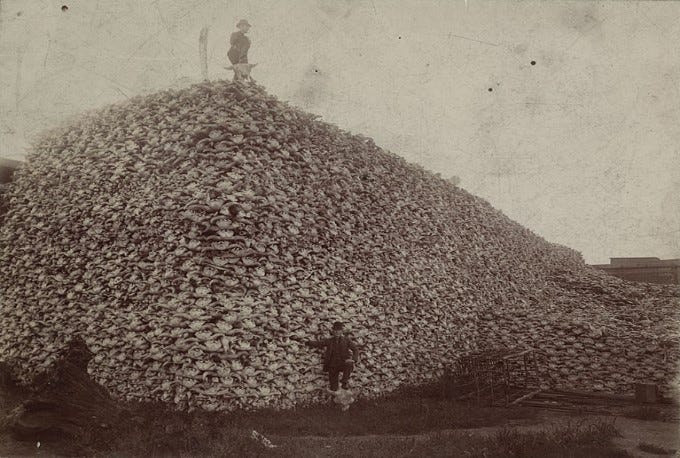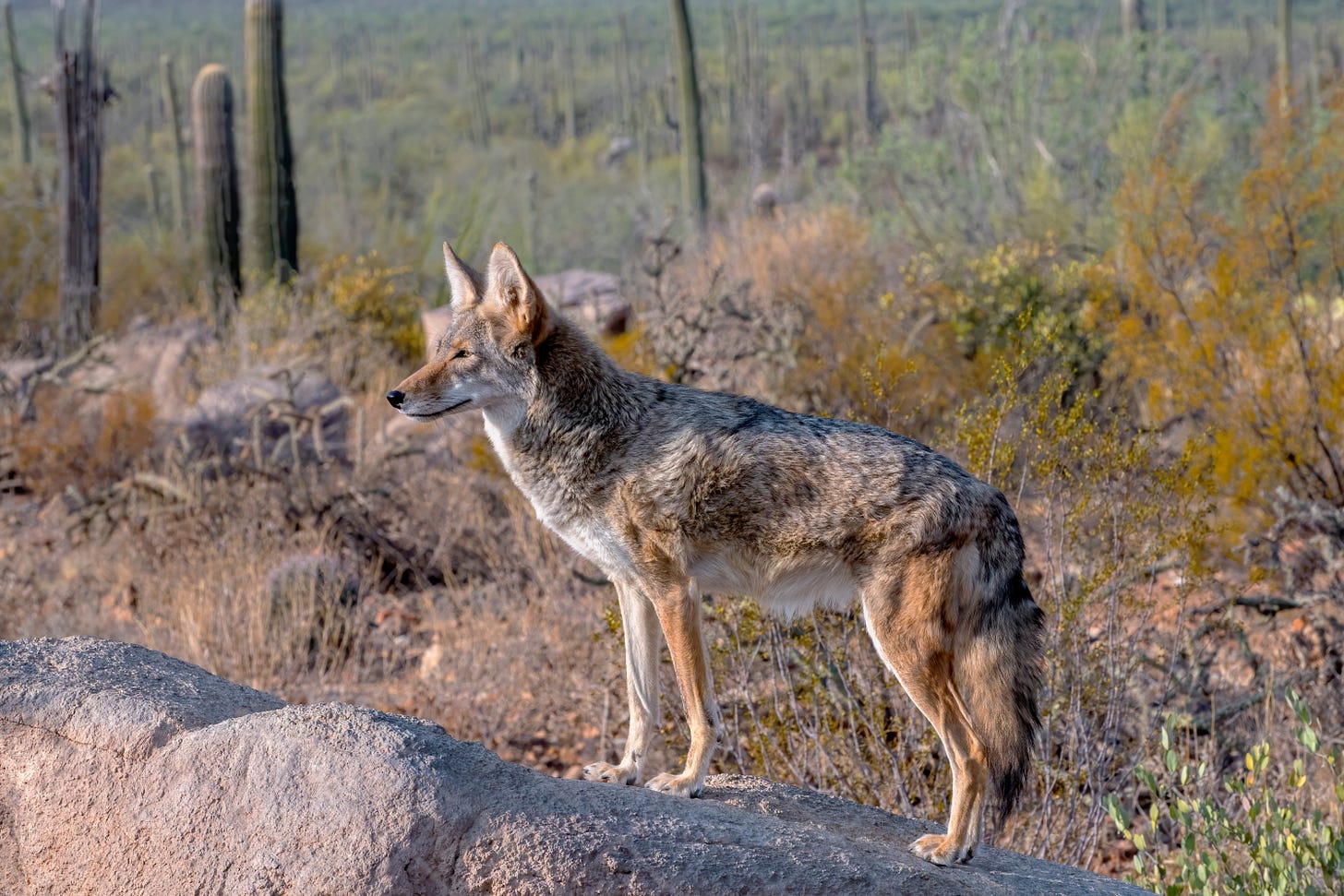The Defiance of Coyotes
How To Survive When Everyone Hates You
When I tell people that I’m from Colorado, the answer is often some form of “oh, it’s so beautiful there! I’ve been to Boulder and I loved it.” I then have to explain that the Southern part of the state is not like Boulder at all. Colorado Springs is the evangelical capital of America. Pueblo is a factory and ranching town. And, while the Rocky Mountains and foothills occupy the middle of the state, the non-mountain parts are quite flat. It’s too dry to be a breadbasket, but the land is great for cattle.
The land is great for bison too. If you’ve ever eaten a buffalo burger there’s a good chance it came from my home state, and a better chance that it was pricey. After decades of conservation and careful breeding there are still fewer than 500,000 buffalo, alive or in captivity — about half a percent as many cattle as there are in this country.
Things didn’t used to be this way. In 1800, 30 million buffalo roamed across America’s great plains, from east of the Mississippi to Utah and Idaho. By 1886, only a few hundred remained anywhere. The settlers, with their guns and their hunger for land, massacred these beasts by the thousands, both to harvest their valuable hides and to destroy the indigenous people who depended on them for food. They slaughtered the bison en masse, skinned them, and left them to rot.
It wasn’t just the buffalo. Americans hunted the passenger pigeon to extinction and killed every wolf within our borders. Mountain lions culled, elk depleted, grizzly bears slaughtered: not necessarily for food or self-preservation, but because this country decided they should not exist. These animals are only here today thanks to the tireless efforts of the conservationists, who are themselves being driven to extinction by the Trump regime.
The settlers singled out another animal for extermination in the 1800s — and in the 1900s — and now, today, still: the coyote, a creature scorned and reviled for centuries, for whom few tears have fallen.
Here’s Mark Twain on the subject:
A long, slim, sick and sorry-looking skeleton, with a gray wolfskin stretched over it, a tolerably bushy tail that forever sags down with a despairing expression of forsakenness and misery, a furtive and evil eye, and a long, sharp face, with slightly lifted lip and exposed teeth. He has a general slinking expression all over. The coyote is a living, breathing allegory of Want. He is always hungry. He is always poor, out of luck, and friendless. The meanest creatures despise him, and even the fleas would desert him for a velocipede. He is so spirtless and cowardly that even while his exposed teeth are pretending a threat, the rest of his face is apologizing for it. And he is so homely! -so scrawny, and ribby, and coarse-haired, and pitiful.”
Mark Twain was far from alone in this sentiment. Though there are many examples, the Best Quote About Coyotes Award, with no close second, goes to John L Von Blon, who, in 1920, described coyotes in Scientific American as “that despised howling pariah of the animal kingdom” and declared that “he is the original bolshevik — and good only “after treatment.””
From a policy perspective, little has changed. Last year, the Department of Wildlife killed 67,000 coyotes, which is a tiny fraction of the number killed by hunters who sometimes stage contests to see who can slaughter the most. In 2014, National Geographic estimated that Americans kill half a million coyotes per year — the total number of bison left on earth.
We did not despise the buffalo as we drove them to the brink of extinction. We feared wolves and bears, but few people feel disgust when we look at these magnificent creatures. The coyote, on the other hand, is one of the most hated animals on the continent, and our centuries-long war against them has taken a toll. In 1880, you could find coyotes all across the great plains and deserts of North America. After tireless efforts to slaughter them by any means necessary — poison, traps, arial machine gunning — coyotes can only be found everywhere in the contiguous United States, most of Canada, and Alaska. There are coyotes in Central Park now.
All that killing, and the coyote population hasn’t shrunk at all. It’s grown.
Keep reading with a 7-day free trial
Subscribe to BANNED IN YOUR STATE to keep reading this post and get 7 days of free access to the full post archives.




